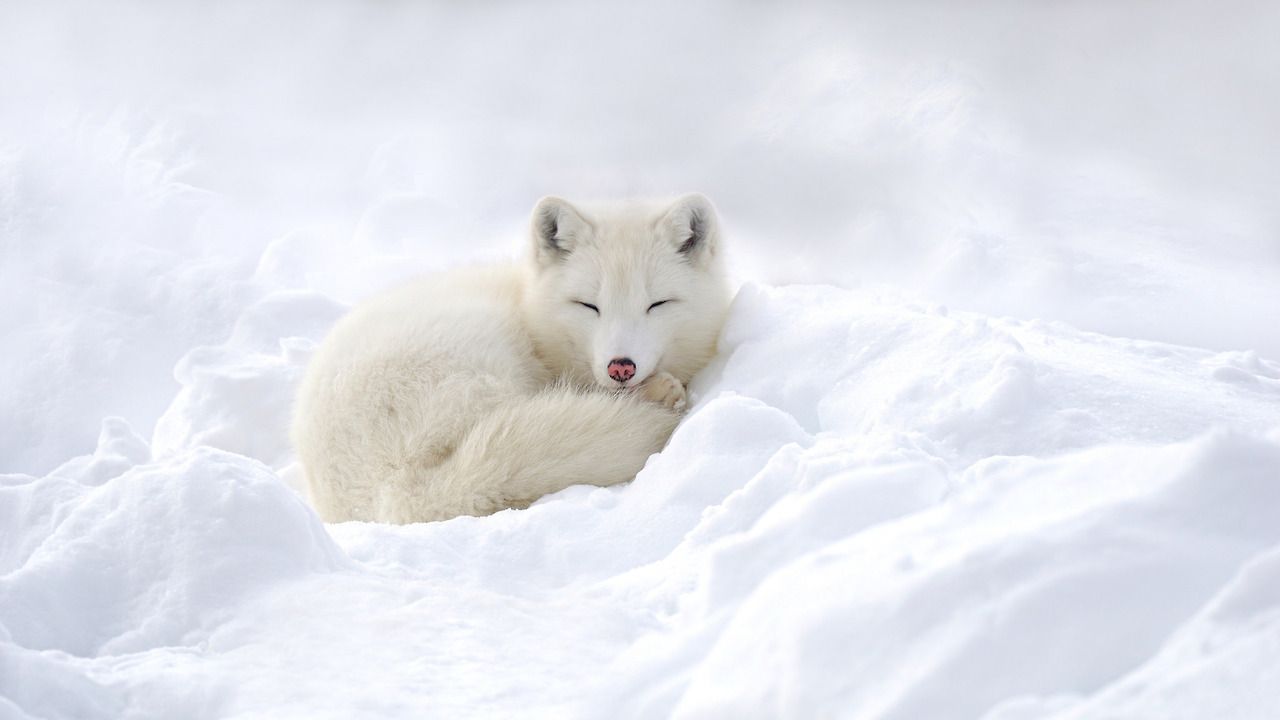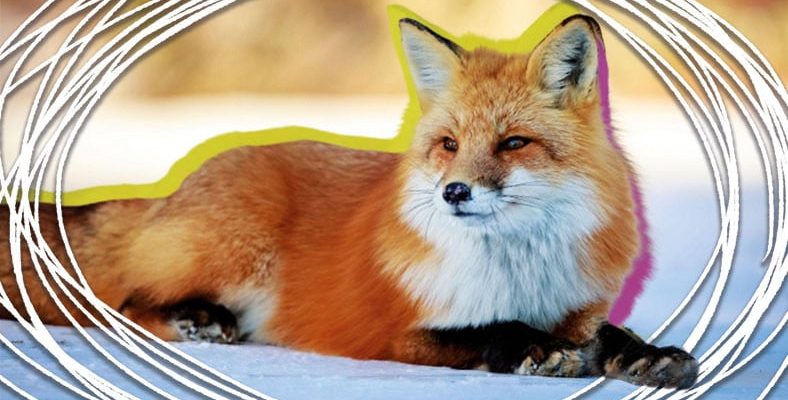Foxes, which are engraved in our minds with their cunning characters in fairy tales, appear as many different species almost all over the world. If you still see it somewhere, don’t be fooled by its cuteness and approach it because when you hear about the interesting features about the fox, you will see that loving it from afar will be the most beautiful love.
The world is an interesting place. Some animals can barely survive in a small area, while others can evolve to survive almost anywhere in the world, regardless of snow, rain or mud. The fox is one of these creatures. No matter where you live, when you look around, you can definitely come across a suitable type of fox for that region.
Of course, we got used to the fox by hearing it in fairy tales, not by seeing it left and right. There is always a cunning fox character in fables in which animals are the leading roles. These tales are not exactly fiction, because the fox is indeed one of the most cunning animals in the living world. Hearing interesting features about the fox You will understand better that his cunning is actually only a minor skill of his.
Unusual information about foxes, some of which you will hear for the first time:
- There are many different species of foxes, which are actually relatives of dogs.
- The fox is the lone hunter of the lonely nights.
- Foxes take advantage of the earth’s magnetic field while hunting.
- The relationship between humans and foxes is older than we think.
- Island foxes went through a unique evolutionary process.
- They rained food from the sky to prevent fox rabies.
- Arctic foxes can withstand unbearable cold.
- Foxes are fast, very fast.
- They can be much more cunning than we think.
There are actually many different species of foxes, which are relatives of dogs:
Foxes from the Canidae family are related to coyotes, wolves and dogs. If you look carefully, possible to see their commonalities. Of course, you may not see these features in every fox because there are 37 different species identified so far. But not all of them are foxes, but some are mistaken for coyotes or wild dogs, experts say. Still, it is certain that there are 12 species that we can talk about as true fox species. The most common among these is the red fox, which lives in the Americas.
The fox is the lone hunter of the lonely nights:
Foxes’ eyes have evolved to be sensitive to nocturnal hunting, although this varies by species. The layer in their eyes reflects even a little light in a way that doubles. Because the fox doesn’t have many animals It prefers to hunt alone, day or night. He is alone not only during the hunt, but also in his life. After mating, the male returns to his solitary life after a short while, while the mother and her cubs live as a small herd for a while, but this herd disperses when the cubs grow up.
Foxes make use of the earth’s magnetic field when hunting:
In fact, even birds, sharks, and turtles have some form of magnetic sense, but foxes are thought to be the only creatures that hunt using it. The fox chasing its prey, senses its movement towards the north. When this perception, sound and image align, it launches pinpoint attacks just like a guided missile. It doesn’t matter to the fox whether the prey is in the bushes or under the snow.
The relationship between humans and foxes is older than we think:
It is known that people keep domestic foxes, especially in some countries such as the USA. A fox is never fully tamed but can still get used to living with humans. This situation is not new, during excavations in Jordan in 2011, a man and a fox were found sideways buried. The remains were about 16,500 years old, 4,000 years before humans domesticated dogs. Although we haven’t been able to complete the process until today, we can say that foxes are one of the first animals we domesticated.
An experiment was conducted on the subject in 1959 by a geneticist named Dmitry Belyaev. He took the silver foxes, which were the least aggressive towards humans, and began to domesticate them. 10 generations later foxes they started licking people’s hands, wagging their tails and barking. Moreover, white spots appeared on their fur and their ears were drooping. So, within a few generations, domesticated foxes turned into the dog you know.
Island foxes went through a unique evolutionary process:
There is a species of fox called the island fox, native to the Channel Islands, found off the coast of Southern California in the United States. How those foxes got there, we have no information. but according to estimates, its roots go back to the gray foxes that were taken to the island by humans 13,000 years ago. Island foxes, which set the record for the lowest genetic diversity in a sexually reproducing species, have neither disease nor malformation, despite a lack of genetic diversity. Moreover, they are not even in danger of extinction, unless they are hunted by humans.
To prevent fox rabies, they rained food from the sky:
In the 1960s, a major rabies epidemic broke out among foxes in Switzerland. The government has developed a special plan to eradicate fox rabies, which has become a major problem as it also attacks humans and pets. Chicken heads from the rabies vaccine house were scattering seeds across the Swiss countryside. According to official figures, more than 52 thousand vaccinated chicken heads were distributed to rural areas between 1979 and 1984 and the rabies problem was completely eliminated.
Arctic foxes can withstand unbelievable cold:

The arctic foxes, which live widely in areas such as Canada, Alaska, Russia, Greenland, and Scandinavia, are an admirable example of fox evolution. Their feathers are completely white and their eyes are built to eliminate snow reflections. Besides their thick fur, which is even more interesting are fat deposits under the skin. Sometimes this fat can be half their body weight. All these precautions are not in vain, because arctic foxes can exist without any problems even in the cold of minus 70 degrees. However, arctic foxes that have evolved in this way are unfortunately going through troubled times due to climate change.
Foxes are fast, very fast:
The average fox can run at a speed of more than 50 kilometers per hour, even if it varies according to the species and the regions they live in. Not just running fast, It can jump in place at a height of more than one meter. An arctic fox observed by the researchers covered more than 4,000 kilometers from Norway to Canada in as little as three months. So foxes are not only fast, but also extremely hardy creatures.
They can be much more cunning than we think:
In fairy tales, foxes are always described as sneaky, cunning and intelligent creatures. These are not fictions, foxes are indeed extremely intelligent. If they are going to enter a house, they choose the most suitable time, They have special tactics to avoid wild dogs and are extremely stubborn when it comes to hunting. Even more interestingly, they can pretend to be dead. An arctic fox caught by a fur hunter tries to deceive the hunter by pretending to be dead. So what else would you do?
found in almost every part of the world and the foxes we know with their cunning We told you about some of its features that you will be amazed when you hear about it. Unfortunately, however cunning they may be, some species are endangered by human hunters.
Source :
https://www.mentalfloss.com/article/59739/14-fascinating-facts-about-foxes
